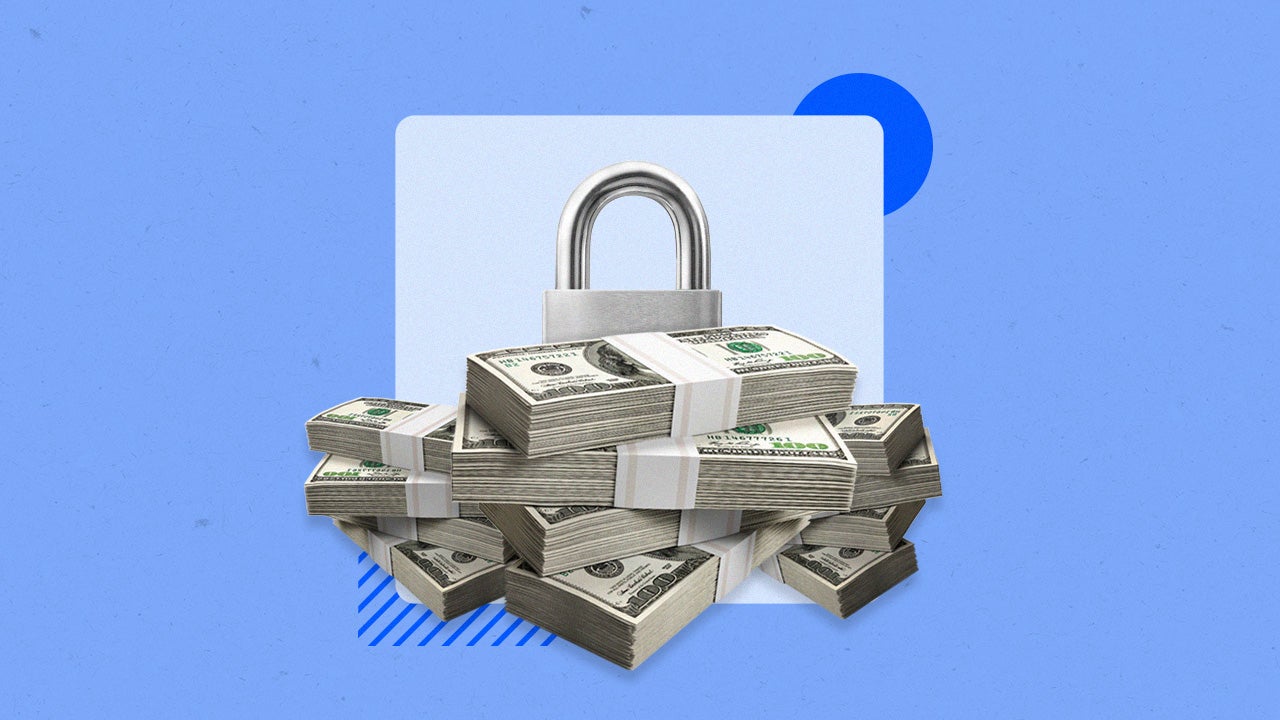5 things to know before opening a CD

If you’re looking for a low-risk place to invest, you might be considering an account type known as a certificate of deposit (CD). CDs are made for saving money, but they’re different from savings accounts and come with a unique set of variables and terminology.
In this guide, you’ll learn everything to know about CDs before opening an account, from what an annual percentage yield (APY) is to when a CD is better than a savings account.
1. CD terminology
Someone new to investing in CDs may find themselves somewhat disoriented by all the terminology specific to these types of accounts. Here’s a breakdown of the essential words and phrases you’ll need to understand before exploring CD options.
Annual percentage yield (APY)
The annual percentage yield (APY) is an important aspect to understand when it comes to CDs: It indicates how much money you’ll earn. Specifically, the APY refers to the compounded interest rate for one year. The higher the APY, the more money you’ll make. While APYs and simple interest rates for CDs typically are the same, it’s still important to look for the APY above all else, since some accounts may compound more frequently.
Interest rates for CDs may compound daily, monthly or quarterly. Those that compound more frequently will produce higher earnings.
Term length
A CD term is the length of time that your money will be left in the account. For example, if you open a CD with a one-year term, your money will stay in the account for one year and grow at the designated APY until the maturity date. The maturity date is simply the end date of the term — when the account holder can withdraw the total balance, including earnings. Financial institutions typically have many term options, so you can choose the term that best fits your needs and goals.
Principal balance
The principal balance of a CD is the amount you initially deposit into the account. Basically, it’s the total balance of the account minus earnings. Most CDs have a minimum deposit requirement, meaning that your principal will be at least that required amount.
Renewal
Some CDs may come with an option to automatically renew or roll over into a new CD. This means that once the CD matures, it will start a new term with the new total balance if the money isn’t withdrawn within a specified amount of time, typically a few days.
Early withdrawal penalty
The majority of CDs are locked in for the designated term length, so you won’t have access to the principal or earnings until the end of the term. This is enforced by an early withdrawal penalty, which is a fee you incur if you withdraw any of the funds before the end of the term. The fee may be the amount of interest earned over several months or a fixed dollar amount, which can even eat into your principal.
While most CDs have an early withdrawal penalty, there are some that allow you to make withdrawals before the maturity date, referred to as no-penalty CDs.
Fixed vs. variable rates
Most CDs have a fixed rate, meaning that the APY will not fluctuate at all during the entire CD term. This is helpful if rates start to decline, because a fixed rate CD won’t be affected by falling rates.
While it’s not very common, there are some banks with variable rate CDs. These CDs give you the opportunity to take advantage of rising rates, but they also come with more risk. If rates start to fall, you’re stuck with a lower rate until the CD matures.
2. Specialty CDs
A standard CD comes with a fixed interest rate, an early withdrawal penalty and only allows a single, initial deposit. Specialty CDs are those that differ from any of the standard CD features. Some of the most common types of specialty CDs include:
- No-penalty CDs: A no-penalty CD is simply one that allows you to withdraw money from the account one or more times before the maturity date without paying a penalty fee. These CDs give you more flexibility with your funds, but they may have lower rates than other CDs.
- Bump-up CDs: A bump-up CD gives you an opportunity to increase the CD’s rate of return. If rates increase, you can ask the bank to increase your CD rate. Usually, you can only take advantage of one rate increase per term.
- Step-up CDs: Similar to bump-up CDs, step-up CDs give you a chance to take advantage of increasing rates. However, rather than the account holder requesting a rate increase, the bank will automatically raise the interest rate by a predetermined amount.
- Callable CDs: Callable CDs typically earn higher interest rates than standard CDs, but they come with an extra risk factor — the bank may cut short or “call” the CD before the term is up. This can happen if rates start dropping.
- Add-on CDs: Unlike other CD types, an add-on CD allows you to make one or more deposits after the initial deposit. That way, you can continually grow your savings as more money becomes available to you to invest.
- Jumbo CDs: A jumbo CD is largely the same as a standard CD except that it has a higher minimum deposit requirement, usually $100,000 or more. The average rate on jumbo CDs is slightly higher than the average rate for standard CDs.
3. Investing in multiple CDs
When it comes to investment strategies, sometimes investing in multiple CDs can open up more opportunities for getting higher rates, having more flexibility and diversifying your portfolio. Two common CD investment strategies are CD ladders and the barbell strategy.
A CD ladder involves investing in several CDs with staggered term lengths, so that the CDs will mature at different intervals and allow you to have access to some of your money before the last CD matures. With this strategy, you can take advantage of the higher rates usually offered on longer CD terms without locking up all of your money for that amount of time. It also allows you to reinvest the money from the shorter-term CDs if rates go up, since not all of your money is locked in at a fixed rate for multiple years.
For example, you might create a CD ladder with four CDs over the course of four years. Each CD term is one year longer than the previous one, so that you can redeem one CD every year.
A barbell strategy is similar to laddering but with less regularity. Instead of having multiple CDs that gradually mature over the course of several years, you deposit half of your money in a short-term CD and half in a long-term CD. You might even open several short-term and several long-term CDs.
The aim of the barbell strategy is to take advantage of higher yields on long-term CDs, while also having a pool of money that’s more quickly accessible to you through the short-term CDs, which can be used for reinvesting and potentially keeping up with rising rates.
4. How inflation affects CDs
Inflation increased 0.4 percent in February, according to the most recent Consumer Price Index (CPI) release published by the U.S. Bureau of Labor Statistics. Over the last 12 months, inflation increased 3.2 percent.
The top CD rates for a one-year term have surpassed 5 percent, which is much higher than the inflation rate. This means that, for now, money in a CD with that a high yield will outpace inflation. However, CDs earning less than 3 percent won’t grow at the same speed as prices are rising.
As such, high-yield CDs with fixed rates — meaning the rate will stay the same for the duration of the term — are much safer than some other types of investments, though they may pay less. Another benefit of CDs is that they’re covered by federal insurance, so long as you open an account with an FDIC-insured bank or NCUA-insured credit union.
But while inflation has been slowing, 60 percent of the nation’s top economists don’t expect inflation to hit the Fed’s 2 percent target until 2025, according to a Bankrate survey.
5. When to choose a CD over a savings account
CDs are designed for specific types of savings goals and investment preferences. Some conditions under which a CD might be a better investment than a savings account include:
- You already have an emergency fund in a more liquid account. Having an emergency fund should be prioritized above all else. It ensures that you can pay for unexpected expenses and sustain yourself during a loss of income. It’s best to keep an emergency fund in a savings or money market account, where you can easily access the funds when they’re needed. Only after your emergency fund has been established should you consider opening a CD.
- You’re saving for a specific, shorter term goal. Since CDs come at set terms, they make for good investments for savings goals you want to achieve by a planned date. For example, you might want to open a one-year CD to save for a wedding or vacation in one year. CDs might not be a great investment for a longer term goal, such as retirement.
- The CD rate is higher than the savings account rate. CDs can often offer higher rates than savings accounts as a reward for committing to leave your money in the account for the term. However, many savings account rates, particularly online savings accounts, have seen significant increases recently, and the gap between savings and CD rates has become much smaller.
- You can comfortably meet the minimum deposit requirement. If you have more money to spare and want to earn a guaranteed rate on it, a CD might be a good place to invest. CDs usually have higher minimum deposit requirements than savings accounts.
How to open a CD
To open a CD, you’ll first need to find the bank and CD that are right for you. Ideally, find a CD that’s outpacing inflation with a term length that’s suitable to your financial needs (i.e., a period of time you don’t expect you’ll need that money). Once you’ve done that, go to the bank or credit union’s website and open the account using an online application. You’ll need information about yourself, likely including your social security number and government-issued ID.
Bottom line
Understanding the language and strategies used for CDs can help you better evaluate how to make the most of a CD. Some of the variables you might want to consider before opening a CD include APYs, term lengths, fees for early withdrawal and how CD rates compare with inflation.
Also, make sure to find a bank that’s FDIC-insured, or a credit union that’s NCUA-insured, so the money you lock away is federally protected.
–Bankrate staff writer Marcos Cabello updated this article.





